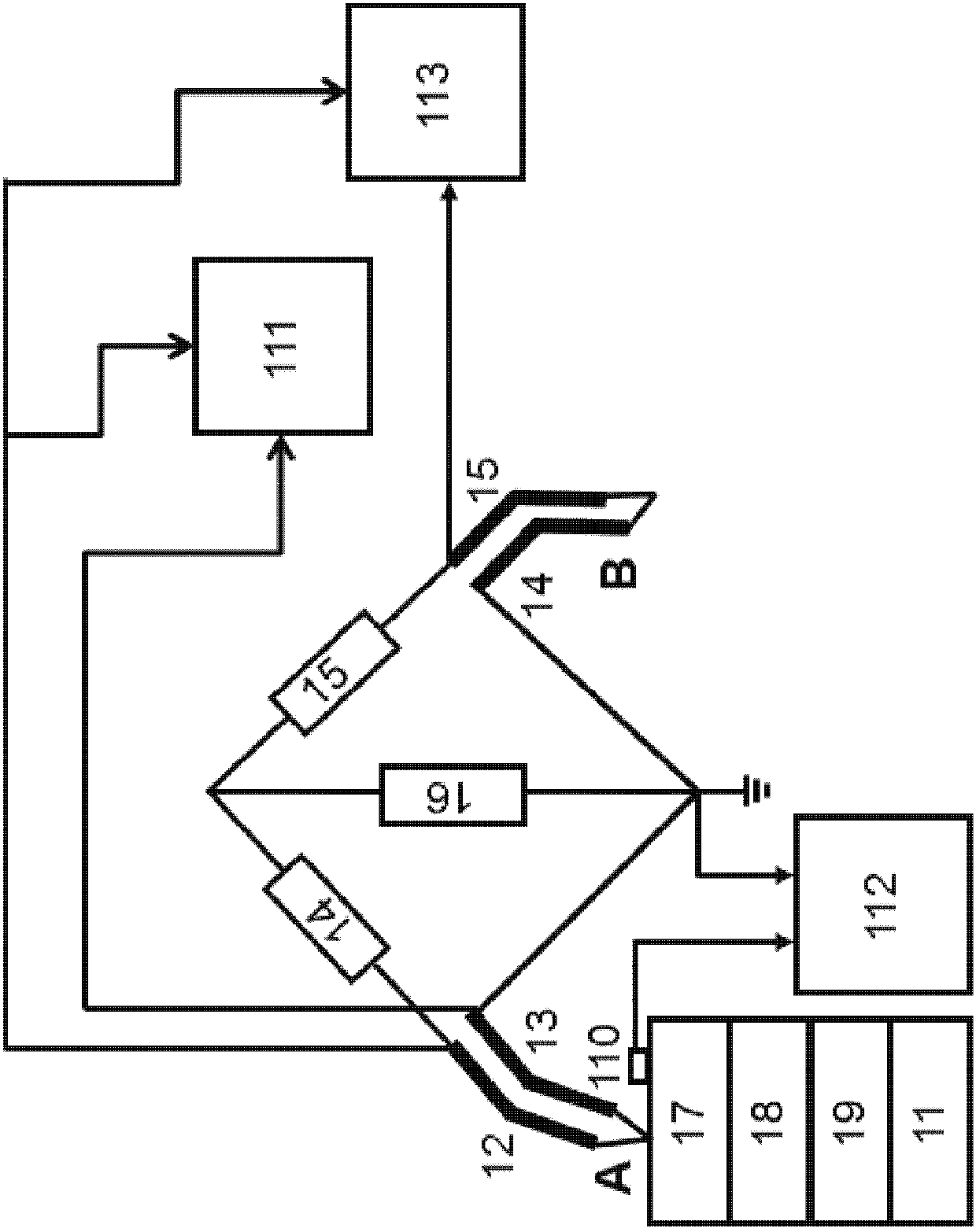Nano thermoelectrical Seebeck coefficient in-situ characterization device based on scanning thermal microscope
A Seebeck coefficient and microscope technology, applied in scanning probe microscopy, measuring devices, scanning probe technology, etc., can solve the lack of in-situ quantitative characterization of the physical properties of nanometer thermoelectric materials, failure, and difficulty in realizing nanometer thermoelectricity. In situ quantitative characterization of the Seebeck coefficient
- Summary
- Abstract
- Description
- Claims
- Application Information
AI Technical Summary
Problems solved by technology
Method used
Image
Examples
Embodiment 1
[0052] The micro-area Seebeck coefficient of Bi-Sb-Te thermoelectric thin film was tested by using the nano-thermoelectric Seebeck coefficient in-situ quantitative characterization device established in this application, Figure 6 The test results are shown, where the abscissa is the ratio V of the triple frequency harmonic signal of the micro-area of the nanothermoelectric material to the probe first harmonic signal 3ω / V 1ω , and the ordinate is the micro-area Seebeck voltage double frequency harmonic signal V 2ω , showing a linear relationship consistent with theoretical derivation, according to its linear slope and the k value related to the resistance of the probe mentioned above, the micro-area Seebeck coefficient S= 165.7μV / K, which is very close to the macroscopic test result S=160μV / K of the film, indicating the feasibility and accuracy of the micro-area Seebeck coefficient in-situ quantitative characterization method and device.
Embodiment 2
[0054] The in-situ quantitative characterization device for nano-thermoelectric Seebeck coefficients established by this application was used to test the Seebeck coefficients of a micro-region of a thermoelectric material. The results are as follows Figure 7 shown. According to its linear slope and the aforementioned k value related to the resistance of the probe, the micro-region Seebeck coefficient S=53.10μV / K can be calculated from equation (4), which is close to the macroscopic test results of the film S=50μV / K, which reflects the inhomogeneous distribution of the Seebeck coefficient in the micro-area, and this result further shows the feasibility and accuracy of the in-situ quantitative characterization method and device for the Seebeck coefficient in the micro-area.
[0055] It must be noted that the above two results tested using the application's "A Method and Device for In-Situ Characterization of Nano-thermoelectric Seebeck Coefficients" are consistent with the publ...
PUM
 Login to View More
Login to View More Abstract
Description
Claims
Application Information
 Login to View More
Login to View More - R&D
- Intellectual Property
- Life Sciences
- Materials
- Tech Scout
- Unparalleled Data Quality
- Higher Quality Content
- 60% Fewer Hallucinations
Browse by: Latest US Patents, China's latest patents, Technical Efficacy Thesaurus, Application Domain, Technology Topic, Popular Technical Reports.
© 2025 PatSnap. All rights reserved.Legal|Privacy policy|Modern Slavery Act Transparency Statement|Sitemap|About US| Contact US: help@patsnap.com



